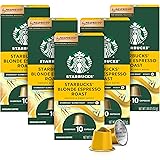Mastering Back-to-Basics French Press Coffee: Your Ultimate Guide to a Rich Brew
Crafting a truly exceptional cup of French press coffee does not require complex machinery or intimidating techniques. As Rob McGee demonstrates in the video above, brewing fantastic French press coffee is surprisingly straightforward, focusing on a few essential steps that elevate your daily ritual. This guide expands on those back-to-basics principles, ensuring you achieve a rich, full-bodied coffee experience every time.
The Essential Gear for Your French Press Journey
Before you begin your brewing adventure, gathering the right equipment sets the stage for success. Think of your French press as a canvas, where high-quality components become your finest paints. A standard 34-ounce French press, like the one Rob uses, offers ample capacity for multiple servings or a generous single cup.
Pre-warming your French press with tap water is crucial, much like pre-heating an oven before baking. This simple step ensures the hot water you add for brewing maintains its optimal temperature, preventing a sudden drop that could under-extract your precious coffee. Additionally, always use filtered water; just as a clear pond yields better drinking water, filtered water removes impurities that can distract from your coffee’s pure flavor profile.
The Heart of the Brew: Understanding Coffee and Grind
The quality of your coffee grounds directly impacts the final taste, making fresh, coarsely ground coffee an absolute necessity for French press brewing. Imagine your coffee as tiny sponges; a coarse grind ensures these sponges are perfectly sized to absorb water and release flavor slowly. Unlike finely ground espresso, which can slip through the French press filter and create a muddy cup, a coarse grind prevents excessive sediment, allowing for a clean, bold taste.
When measuring, Rob suggests using 10 level tablespoons of ground coffee, providing a balanced and robust flavor. If you’re buying pre-ground coffee, look for a “French press” setting at your local grocery store or ask your favorite coffee shop to grind fresh beans for you. This consistency is key to achieving that signature French press coffee richness.
Precision Brewing: Water Temperature and Ratio Defined
Achieving the perfect brewing temperature for your French press coffee is like finding the sweet spot for cooking; too cold, and you get under-extracted, weak coffee; too hot, and you risk burning the grounds, leading to bitterness. The ideal range of 200 to 205 degrees Fahrenheit, as mentioned, is roughly “a minute or so off the boil” for filtered water. This temperature ensures optimal extraction, coaxing out all the delightful flavors without harsh notes.
The water-to-coffee ratio is another fundamental element, often expressed as a proportion, here a 16 to 1 ratio. Think of it as a recipe where precise measurements guarantee a delicious outcome. This ratio, using 16 parts water to 1 part coffee, creates a balanced and full-bodied cup that truly highlights the inherent characteristics of your chosen beans.
The Blooming Ritual: Waking Your Coffee
The “bloom” phase in French press brewing is a beautiful and essential step, often overlooked by beginners. When you pour hot water over your coarse coffee grounds, as Rob demonstrates by filling the press halfway, the coffee “blooms” by releasing trapped gases. This phenomenon, which typically lasts about 30 seconds, is like stretching before a workout; it prepares the coffee for optimal extraction.
Allowing these gases to escape ensures that when you add the remaining water, it can more efficiently saturate the coffee grounds, leading to a more even and thorough extraction of flavor. Skipping the bloom can result in a less flavorful, unevenly extracted cup of French press coffee, so take those crucial 30 seconds to let your coffee awaken.
The Full Immersion: Steeping to Perfection
Once your coffee has bloomed, a gentle stir ensures all the grounds are fully immersed and evenly saturated, preventing dry pockets that would hinder flavor extraction. Next, pour the remaining filtered water into your French press, stopping about an inch from the spout. This critical gap leaves enough room for the plunger and prevents any messy overflows when you finally press down.
The total steeping time for your French press coffee is precisely four minutes, a timeframe that allows the water to fully extract the coffee’s rich oils and soluble solids. This duration is perfectly calibrated to create a robust and flavorful cup without over-extracting the coffee, which could introduce unwanted bitterness. Setting a timer ensures you hit this sweet spot every single time.
The Gentle Plunge and Perfect Pour
When your timer signals the four-minute mark, your French press coffee has completed its steeping phase and is ready for the final step. Gently and slowly push the plunger down to the bottom, applying even pressure to filter the grounds without agitating them too much. This slow descent is vital, much like easing a boat into the water; a sudden plunge can disturb the sediment and lead to a cloudy cup.
After plunging, let the coffee settle for 10 to 15 seconds, allowing any stray fines to rest at the bottom, further ensuring clarity in your cup. Remember to align the slots on your lid with the spout before pouring, then grab your favorite mug. Pour yourself a delicious cup of freshly brewed French press coffee and savor the rich aroma and deep, satisfying flavors of your expertly crafted brew.







